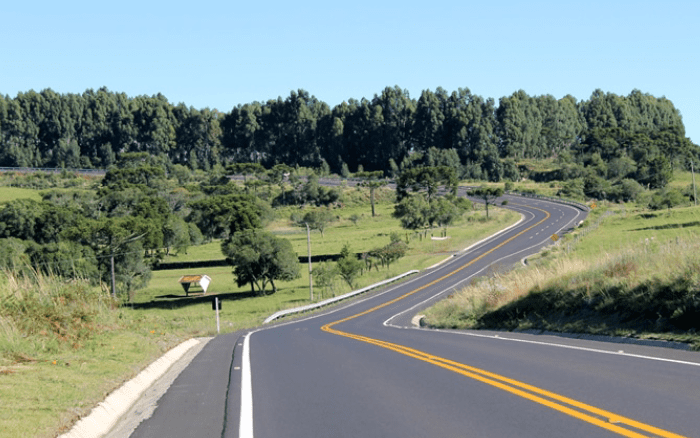Case Study
SC-114 Rehabilitation Painel
 Introduction
Introduction
Santa Catarina is one of Brazil’s southernmost states. The region is characterized by a high-temperature gradient where summer temperatures can reach 32°C (90°F), and drop to -5°C (23°F) in the winter. In 2015, the 55 km (34 mi) long stretch of SC-114 roadway connecting the towns of São Joaquim and Painel needed repair.
Challenge
SC-114 needed rehabilitation due to fatigue damage and occasional thermal cracking. The original repair plan called for full-depth reclamation (FDR) with cement. However, timing and safety concerns related to traffic interruption associated with the full depth replacement process made the local road authority DEINFRA-SC reconsider the initial plan.
Resolution
Compasa, a leading Brazilian road construction company, provided an alternative design. The design called for milling of the existing wearing course; paving 2.5 cm (1 in) of HiMA-enabled SAMI layer; followed by 4 cm (1.6 in) HiMA-enabled wearing course. The ultra-thin HiMA SAMI layer is designed to provide reflective crack protection, while the wearing course would give the pavement long-term distress resistance. The alternative design allowed for much faster project completion time and a substantial reduction in traffic interruption. DEINFRA-SC achieved the desired benefits at a similar or lower cost overall.
Compasa manufactured the Compaflex HiMA polymer modified bitumen. The asphalt mixtures were produced between 165-170°C (329 – 338°F) and paved at a 143-154°C (290 – 309°F) range. As of June 2020, the pavement has stood up to the test.
